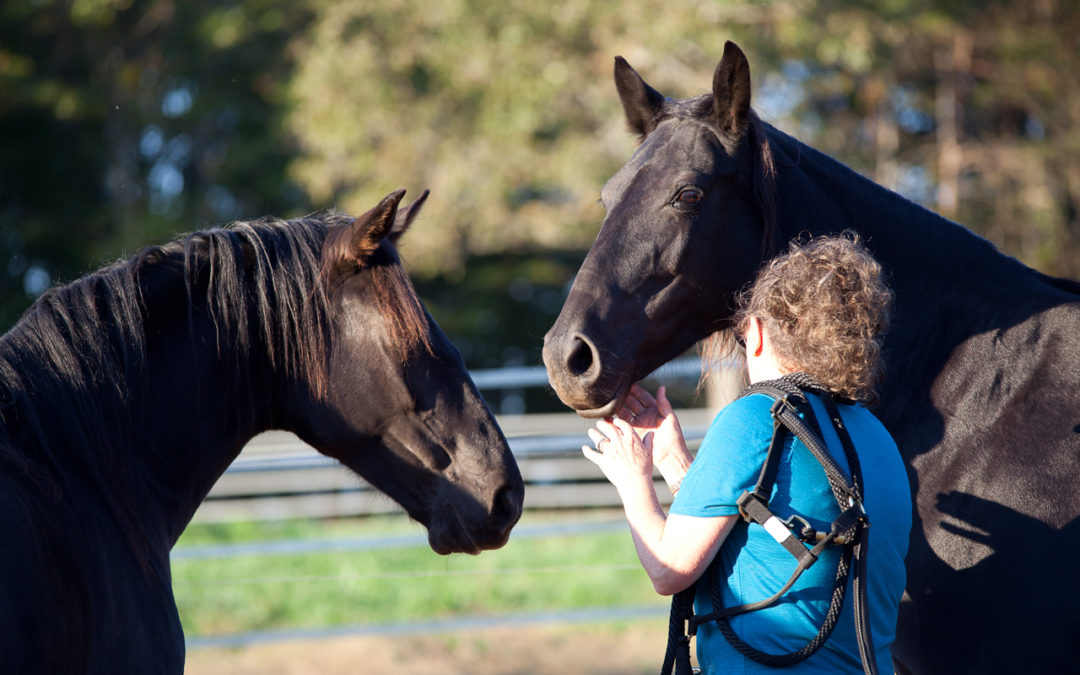About a week ago, I noticed spots inside both ears of my Rocky Mountain mare, Almond Joy “Allie”. They appeared similar to small whitish warts. I haven’t had Allie but a few months and she has always resisted having her ears maneuvered to get the bridle on so I wondered if moving them caused her discomfort. She is super sweet about everything except her ears.
When the veterinarian arrived a couple days later for routine care at the ranch, I asked her to look at Allie’s ears and let me know what I should do next. She suggested using a fly mask because she suspected the areas were caused by insect bite sensitivity.
I immediately purchased a fly mask with ears that I could use when she would be turned out for the evening. This brought to light how “little” she trusted me to move her ears around. With each attempt she would turn her head away from me when I would begin to go over her ears. Granted, I was using a lead rope around her neck and no halter so it wasn’t difficult for her to turn her head away keeping her ears just out of reach. I didn’t want to work around the halter because that would make it more difficult to get the fly mask under the halter creating even more pressure on her ears. So I took a step back and thought what would be the best way to approach getting the mask on without resistance.
Standing there with the fly mask in my hand, I decided the best place to begin would be ground zero. Get her comfortable with the fly mask in my hand, rubbed on her shoulder, rubbed on her cheeks, rubbed on her face, etc. until she was totally comfortable with it. We were in her stall and each time she stepped away, I waited a couple seconds and then approached her again. Over and over until she didn’t have any anxiety over the fly mask anywhere on her body, including rubbing it on the back of her ears without bending them in any direction. This took nearly 20 minutes.
Often, I could see in her eyes that she wanted to trust me but wasn’t sure she could. I don’t know if she has had a bad experience involving her ears (i.e. ear twitching) or not but what I definitely knew was that she didn’t’ want me near her ears and that she was very wary of anything that required moving them.
It took five days for me to be able to put the mask on without her wanting to back away from my hands rising to her face. You know, TRUST TAKES TIME. But again, having patience, consistency and creating zero discomfort has shown that trust can be gained if we want it bad enough. Can you think of times you rushed and didn’t allow enough time to develop the trust needed with your horse? It’s never too late to begin building the trust again.


Recent Comments